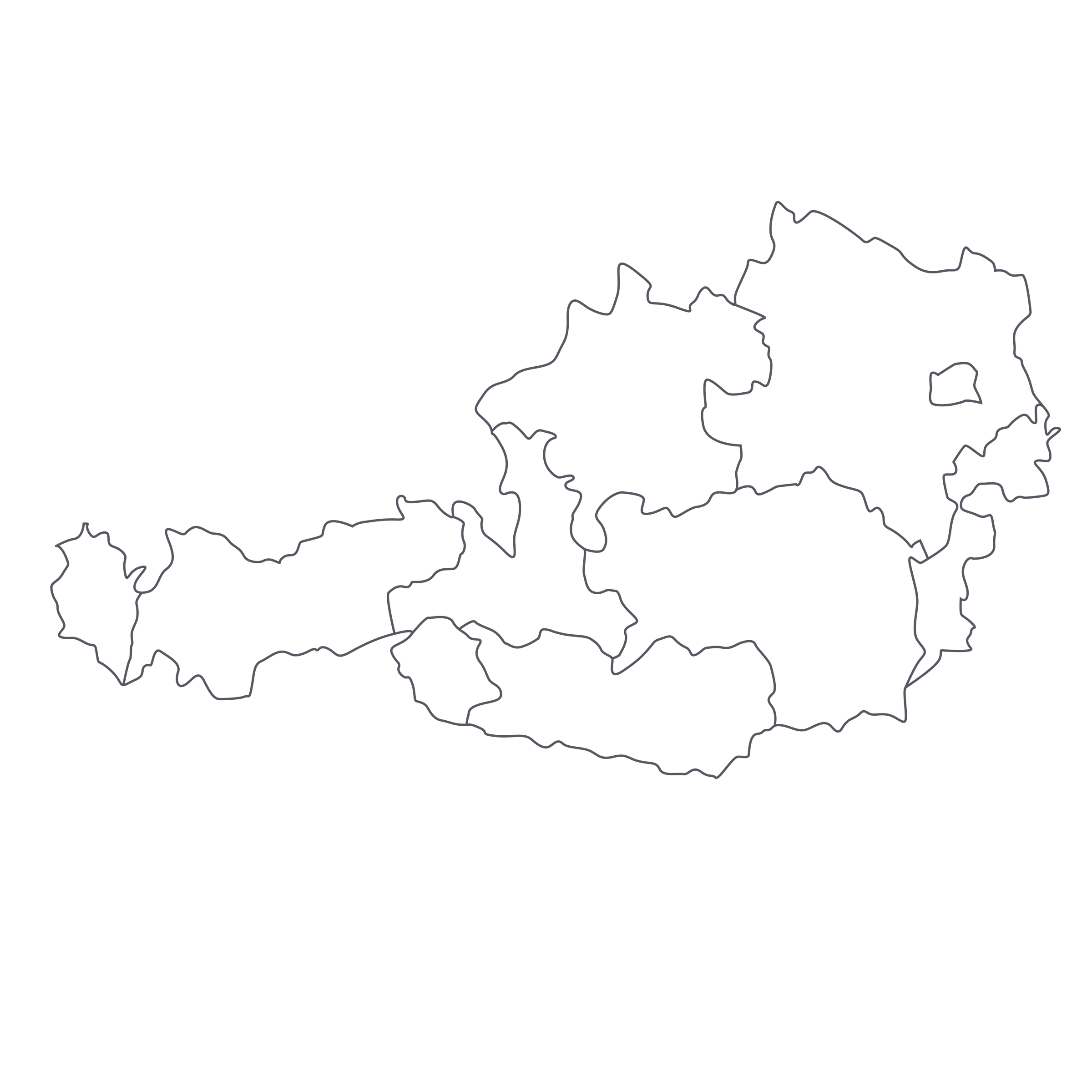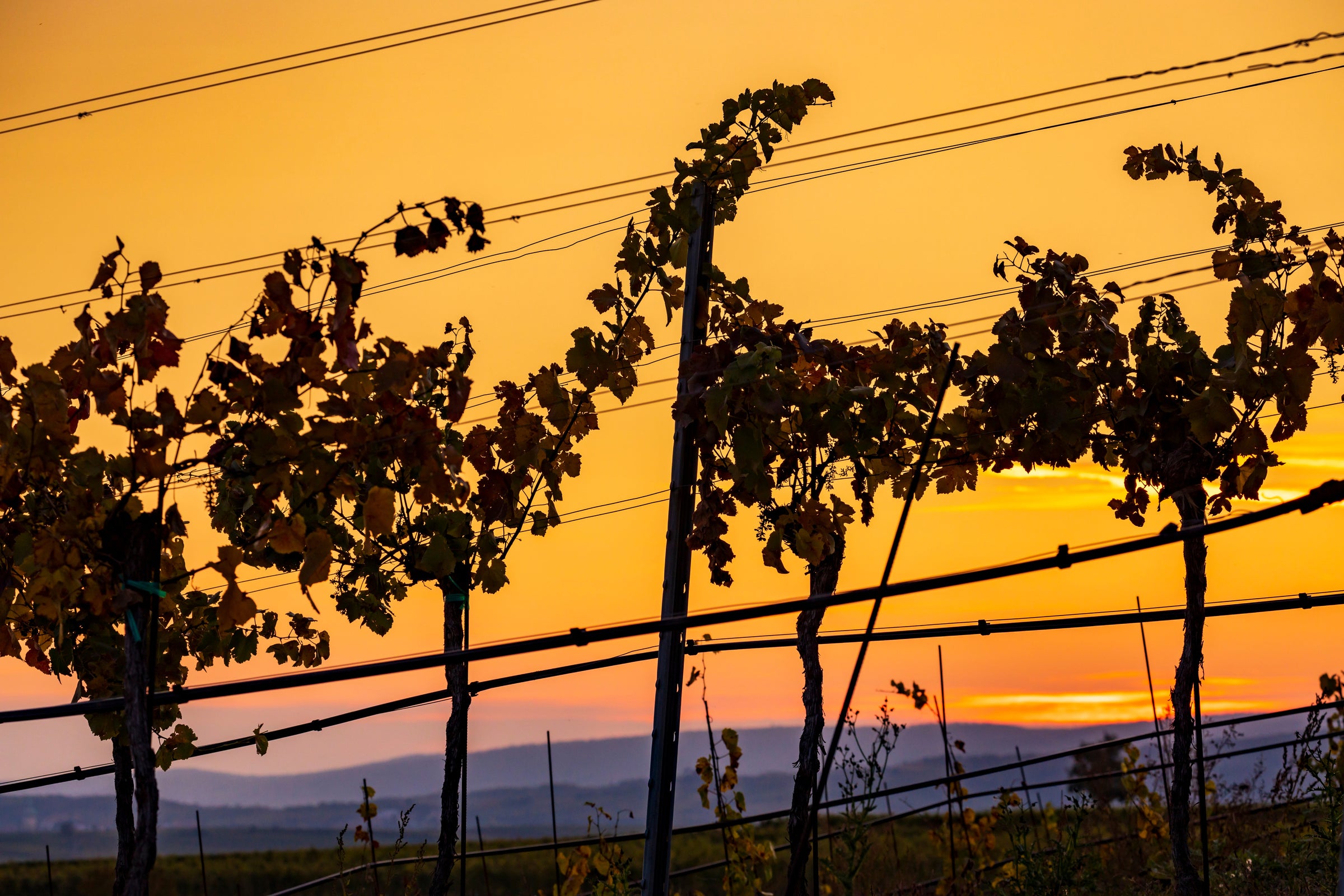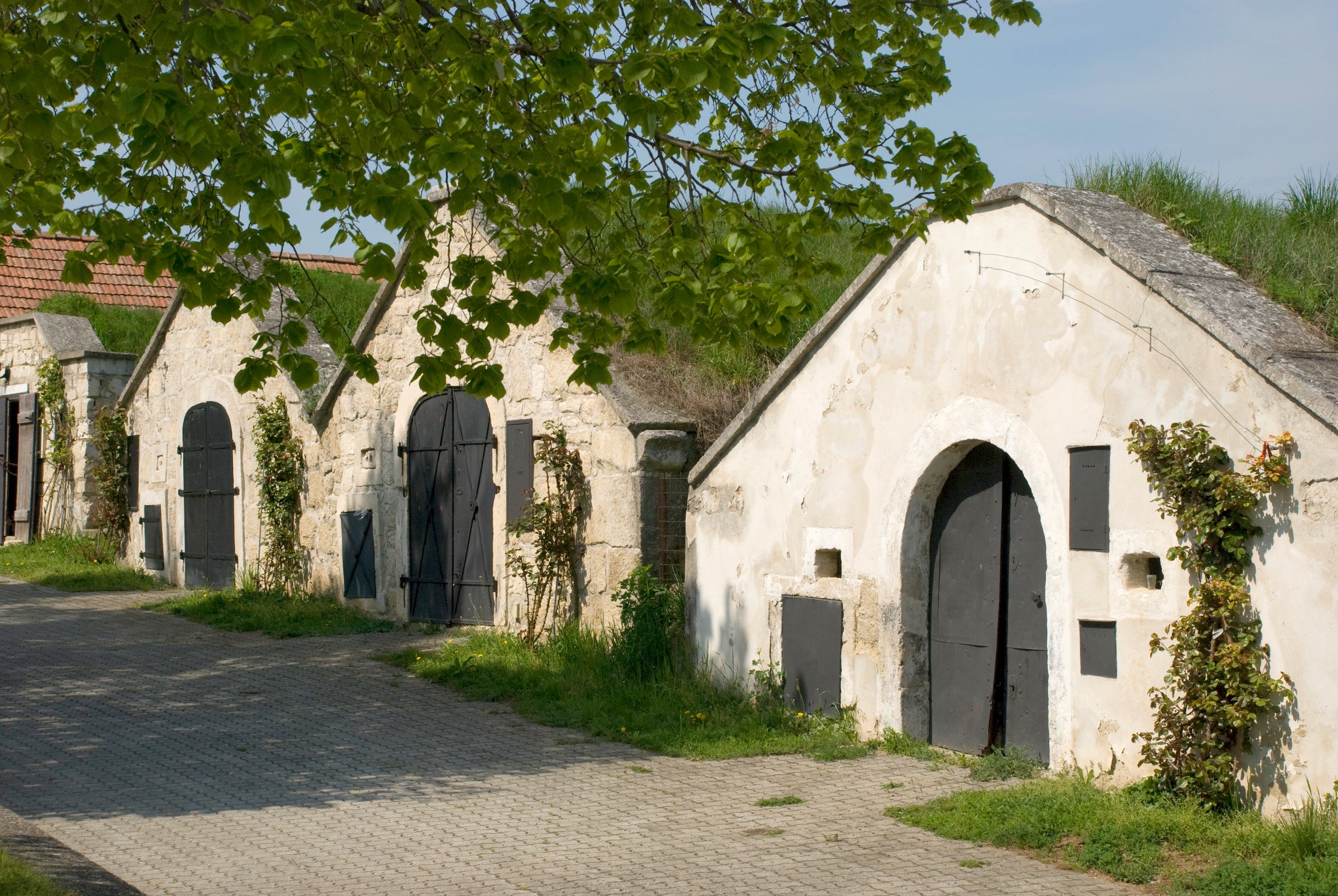There’s a lot of fun to be had with the nomenclature and pronunciation of today’s wine, but the real fun begins when you take your first sip—imagine a mash-up of Alsatian Pinot Blanc, White Burgundy, and Austrian Grüner Veltliner and you’ve got a sense of this delicious, distinctive 2016 “Gemischter Satz” (field blend) from Wieninger. The production of Gemischter Satz—meaning “mixed sentence”— is a storied tradition of Austrian winemaking, but it was only recently that this style of wine started receiving some much-deserved attention.
Historically, these humble quaffers were picked from vineyards that had a dozen or more intermixed varieties. They were mostly made in unlabeled jugs and sold at Heurigen, the local taverns run by small wineries in Vienna and its surrounding hillsides (these watering holes are still a large part of Viennese culture—you must stop by one when visiting the city!). In the 2000s, quality for Gemischter Satz was ramped up and serious flavor came pouring out of Vienna proper, thanks in large part to a band of producers (today’s Fritz Wieninger being one of them) determined to put it in the international spotlight. This is the signature wine of Vienna, the only major European city with a significant wine culture within its boundaries—a co-planted, co-fermented white blend that combines the delicate spice of Grüner Veltliner, the texture of Chardonnay, the freshness of Pinot Blanc, and a smattering of other exotic sensations along the way. It will be the bottle that appears on my table when hosting an eclectic mix of friends and/or family. Not only is it bright and versatile, it’s downright delicious—a white to have around the house all year long and a true chameleon with food.
Born in 1966, Fritz Wieninger wasted no time taking over the family business at 21 years of age. Within three short years, he began winning press accolades for his wines and business exploded. It wasn’t until 1999 that he took a keen interest in Gemischter Satz after sampling his Nussberg bottling, a single-vineyard wine, and immediately realizing its potential (comparing it to unoaked Meursault). In 2006, he founded WienWein (“Vienna Wine”), a group of prominent winemakers that sought to advertise the legitimacy of Gemischter Satz around the world. Shortly after, in 2009, he became the head of the Wiener Gemischter Satz Association. At the start of the 2013 vintage, these concerted efforts led to Gemischter Satz wines being granted their very own appellation: Wiener Gemischter Satz DAC (compare DAC to an AOC of France or DOC of Italy). The difference here, and a first for Austria, is that this designation was created for a style (like Spain’s Cava) rather than a geographical area. Although the grapes are required to originate from Viennese vineyards (the only European city with a wine designation), Gemischter Satz must contain at least three quality grape varieties, with one never exceeding 50% of the blend.
Today’s blend comes from the vineyards of Nußberg and Bisamberg (Wieninger also makes single-vineyard bottlings from both sites). Soils here are respectively clay-limestone and sandy-loam sediment, where his Chardonnay thrives. All of Fritz’s grapes are grown in biodynamic certified vineyards with vines dating back to the 1960’s. The majority of the wine’s makeup, stay with me here, comes from: Grüner Veltliner, Weissburgunder, Welschriesling, and Chardonnay, with a dash of Riesling, Sylvaner, Traminer and Neuberger (this is not an exhaustive list). Harvest is carried out by hand and the commingled grapes were exposed to five hours of skin contact before a two week co-fermentation. There was malolactic fermentation and the wine was raised in 100% stainless steel.
The wine shimmers with a light golden-yellow core and shows bright lime-green highlights on the rim. The nose is tamed, yet energetic, revealing a fresh mineral and fruit presence with a dizzying count of aromas. Yellow apple, peach, white pepper, lemon blossom, apricot, saffron, honeysuckle, and a bouquet of white flowers. The wine is medium-plus bodied with an oily, fairly dense texture that is countered by refreshing acidity. It’s hypocritical in the sense that it has no defining identity, but reveals itself through many faces. It keeps you guessing from start to finish! It’s fresh, crisp, bright, and will continue evolving over the next 3-5 years. When serving, decant for 30 minutes and don’t drink too cold—this was extremely enjoyable at cellar temperature in a large Burgundy stem, and will pair with a wide range of foods. The ideal setting for drinking this bottle would be at a picnic table in a Viennese vineyard, but in the absence of that, fry up a classic
wiener schnitzel with a lemony side salad and let it rip. There’s no other wine like it, and trust me—you won’t be able to stop at one. Cheers!






